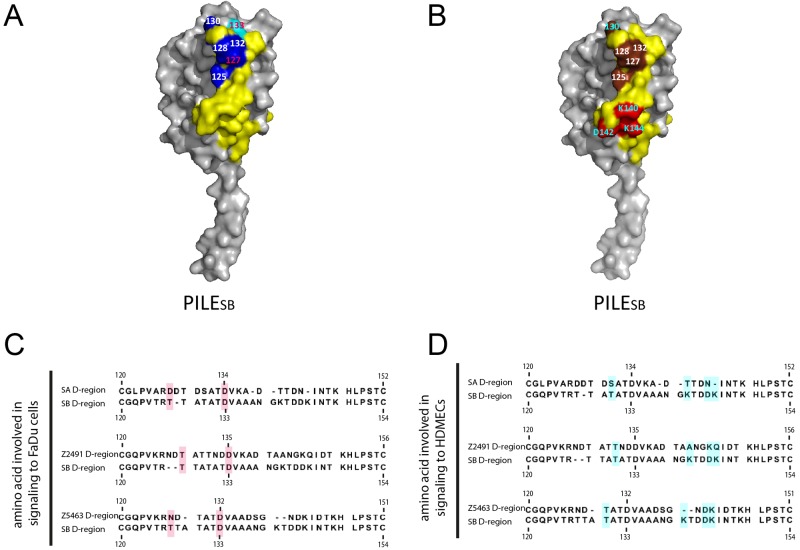FIG 5 .
Point mutations involved in ezrin recruitment are localized on two distinct regions of the D-region. (A and B) Surface representation of PilESB homology models (D-regions are highlighted in yellow). (A) In the top part, threonine and aspartic acid are important for the FaDu cell response. Threonines are highlighted in dark blue and aspartic acids in cyan. The PilESB signaling residues T127 and D133 are in red. (B) The bottom part of the D-region is important for the HDMEC response. The PilESB signaling residues K140, D142, and K144 are highlighted in red, while threonines of the top part are highlighted in brown. Signaling residues are written in blue. (C and D) ClustalW sequence alignment of the D-regions of four different pilin variants: SB, SA, Z2491, and Z5463. Residues involved in the endothelial cell response are highlighted in cyan, and those involved in the epithelial cell response are highlighted in red.

